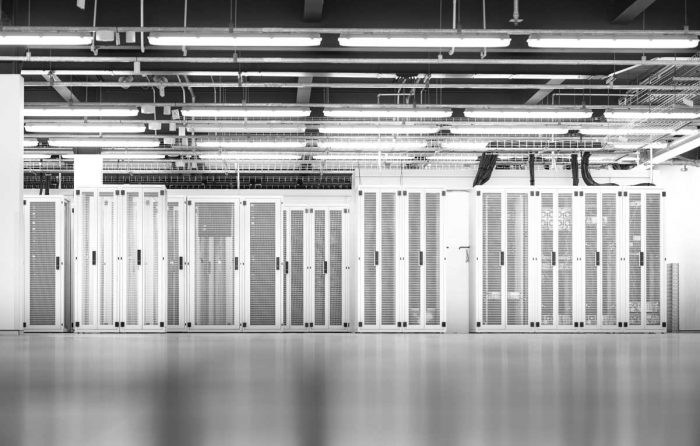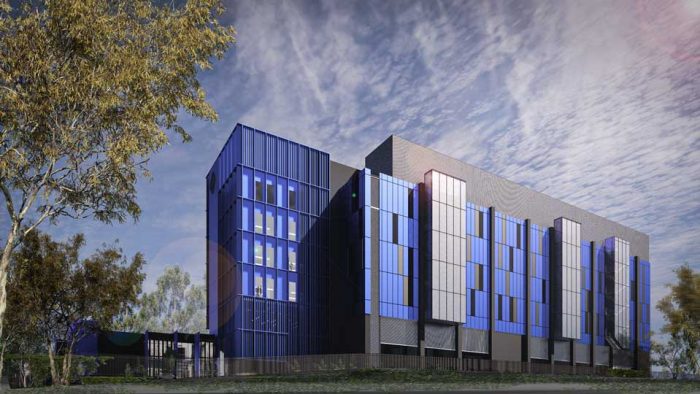A Guide to Data Centre Relocation: What You Need to Know

Data centre relocation is undoubtedly a challenging journey for all involved. Every organisation has different resources and infrastructure requirements that can complicate procedures and it’s vital to consider these extensively for your own business before you begin the data centre migration process.
Data centre relocation is a high-risk project with no room for errors. That’s why choosing a provider with appropriate, proven credentials and creating a highly attentive plan is essential to the overall success of your relocation project. Along with your basic needs and requirements, it’s also important to assess compatibility and scalability for your current cloud model.
At Macquarie Data Centres, you’re in expert hands that are just as committed to your business goals as you are. That’s why we’ve provided a detailed overview of the relocation process to guide you through best practices.
What is Data Centre Relocation?
A data centre relocation, often (wrongly) referred to as colocation, involves the process of physically moving your current data infrastructure to a new location. This could be moving the setup to another room or hall within the same data centre, or a completely new facility.
Data Centre Migration vs Relocation: What’s the difference?
Technically, relocation or colocation is a type of migration. However, on a more broader scale, data centre migration services refers to the transfer of data between computer systems or storage devices (irrespective of physical location). Although other common forms of migration such as consolidation and hybrid (cloud) exist, relocation is the most challenging.
This is mainly due to the fact that identifying your requirements early and extensive planning procedures are critical for a successful relocation.
It may be time-consuming, but if you are planning on relocating, you will need to evaluate all possibilities well in advance. These tasks can include but are not limited to:
- Scalability, i.e. your future footprint by size
- Assessment of cloud requirements
- Spacing requirements
- Ventilation and cooling configuration
- Power load capacities
- Any additional cabling or network equipment that may be required at the new facility
- Coordination of proper shutdown and uninstallation
- Preparation for shipping and installation
- Creation of a thorough project management plan
- Creation of a thorough testing plan
Careful planning of relocation will ensure minimal downtime and will minimise the risk of software and hardware failures during transit, as well as any failures due to improper re-cabling.
Indeed, relocation can be convoluted and stressful and that’s why at Macquarie Data Centres, we’ve put together this breakdown of everything you should be considering so you don’t miss a step along the way.
Why Should I Consider Data Relocation?
Some key reasons why you should be considering relocation include:
- Greater accessibility and proximity to the facility – One of the primary drivers for relocation is the intention of setting up data facilities closer to client markets, as well as foreign or hard-to-access branches of the enterprise. Moreover, data centres situated in an area prone to natural disasters or other security concerns can also become a pressing concern that motivates relocation.
- Greater scalability and enhanced performance capability – It is inevitable that the exponential growth of data-rich technologies will continue to pose challenges for data infrastructure solutions. These dense datasets will become harder and more expensive to move around, inevitably placing a heavy strain on existing networks. This will also translate into more space being required to support increased performance demands. Conversely, businesses that move more of their data centre operations to the solely public cloud may find that their current footprint is becoming too large.
- Decreased overall expenditure – While the expansion or reduction of on-premises data centres can undoubtedly be costly upfront, so too is the maintenance of a data centre that has not been correctly optimised for overall performance and load. For a further breakdown of initial and ongoing costs, you can visit our comprehensive cost of colocation guide.
- Increased energy efficiency – Data centres have undoubtedly become more energy efficient over the last decade and industry leaders are continuing to optimise the environments to prevent wasted energy consumption. If your current configurations or power billing structure is leading you to become unsatisfied with your current provider, it may be ideal to relocate to a more hospitable condition that looks to reduce excess energy consumption and environmental impact.
Assess Your Needs.
Getting on top of your technology requirements will undoubtedly help expedite the design of a data centre environment that has been tailored to your organisational needs.
Identifying the core elements of your business and what infrastructure is necessary to support it is the first essential step in successful data centre relocation. At this stage, most businesses prioritize the IT equipment that provides the most value to the organization.
However, it is worth noting that you should consider whether the new facility will be relevant to your future ambitions, as well as your current ones.
Besides the physical aspect of any data centre, it is integral that you evaluate other factors before the migration. Prioritizing the workforce, business objectives, and risk assessments can help you accelerate the migration process.
Assess Your Requirements for Cloud.
Before undertaking a data centre relocation project, cloud requirements are one of the key things to consider to prevent complications later down the line.
Nowadays, it’s safe to say that cloud infrastructure has become synonymous with enterprise operations. It’s inevitable that at some point or another, some of your organisation’s data will have to be stored in the cloud.
With that being said, it’s vital that you think about how you want to utilise the cloud before determining your relocation plan. For instance, if you’re looking to set up a multi-cloud or hybrid environment that separates sensitive data from general IT operational data, there are a number of considerations to keep in mind, such as scalability, physical security and overall cloud compatibility.
At Macquarie Data Centres, we want to make sure that we can provide the optimal conditions for our customers and that includes facilitating any cloud requirements you may currently have or plan to have. If you need clarification on cloud services and how they interact with your physical data centre, it’s worth visiting our comprehensive breakdown of cloud vs colocation so you can nail down everything that you’ll need from day one.
Data Centre Migration Checklist: What to Prepare.
Step 1. Build Your Team.
A data centre migration includes many different teams working together, all focused on a specific part of the project. That’s why it’s imperative that you build a project management team with members accountable for major tasks and an overall project lead who can ensure accountability from the first site audit to the final cable being installed.
Here are some roles you should be keeping in mind when constructing your relocation plan:
- Project Lead
- Storage Admin
- Backup Admin
- Application Admin
- Network Admin
- Operation Admin
- Logistics Provider
- Insurance
- Security
Step 2. Construct a Plan.
When it comes time to relocate your data infrastructure to a new location there will be numerous processes, dates, resources and goals to coordinate. Building a solid initial plan can be the difference between a successful move and an expensive disaster.
At Macquarie Data Centres, we’ve put together a top-level checklist that you can use to consolidate your plan and give you the foundations you need to determine the most efficient course of action.
Here’s the gist of what you’ll need to plan before the first relocation meeting, as well as the appropriate responsibilities for each team member:
Set the Expectations and Requirements.
Project Manager
- Plan the optimal environment – Get clear on your requisites for connectivity, physical space, power allocation, cooling and location.
- Determine contingency requirements – Decide which spare parts are required and create a list for all necessary parts
- Ensure access has been provided – It is essential that your team has full clearance past the data centre security measures
Storage Admin
- Verify storage requirements – Ensure that ample space is available in the new data centre for your storage arrays
Operation Admin
- Check Accessibility – Ensure that connectivity for remote console access is available at the new facility
Create a Timeline
When you construct a relocation project plan, the timelines that bind your deliverables in place are dually as important as the tasks themselves.
Project Manager
- Plan the move – Plan how and when the physical servers will be moved to the new location and liaise with the new provider to review the initial plan
Backup Admin
- Check backup availability – Check that full backups for any necessary data can and will be completed before the move date
Step 3. Ensure That Your Prerequisites are in Order: Best Practice.
Somewhere in between planning and moving day, you’ll need to ensure that all of the equipment, parts and software are ready.
Project Manager
Confirm dates with external stakeholders – Make sure that hardware and software vendors, as well as your colocation provider are aware of the moving date to avoid unnecessary delays and complications
Operation Admin
Confirm delivery of spare parts – Ensure that all required spare parts have arrived at the new data centre facility
Check availability – Ensure that remote console access is fully working at the new facility
Application Admin
Check Software – Ensure that all operating systems, databases and application licensing is available
Network Admin
- New network configuration – Create a list of new network information and settings and forward the list to other admins
- Connectivity – Ensure end-to-end connectivity is working across patch panels
Along with these general responsibilities, you’ll want to ensure that you minimise any unnecessary downtime and risks by testing all your backups prior to the date of relocation. This includes:
- Creating a list of contingency plans for any possible risks and ensure that these contingency measures are foolproof, especially concerning the restoration of any data should there be complications during the move.
- Have all media and license keys for installing backup server client software if required
- Ensure all applications and databases have been shut down and test to ensure startup goes smoothly
Step 4. Moving Day.
When relocation day arrives, you’ll want to make sure that you have a set list of high priority tasks that can be carried out systematically and efficiently. Continued and total cooperation among the team is integral to the overall success of the operation.
Perform Necessary Checks.
Project Manager
- Ready up – Confirm that all parties are ready to proceed
Backup Admin
- Check backups – Confirm that all full backups were completed successfully the night before
Carry Out the Migration.
Application Admin
- Front-end shutdown – Stop all front-end applications and databases
Network Admin
- Shut down – Shut down and power off all physical servers, storage and networking equipment and disable any monitoring alerts
Logistics Provider
- Move the equipment – Conduct your relocation of all physical equipment and racks in the new data centre
Final Steps.
Network Admin
- Power on – Once the hardware vendor has completed the physical relocation, the network admin must power on and ensure that physical equipment is working properly
- Configure to the new facility – Access the remote console to configure and setup the new networking equipment
- Greenlight – Check the health of all servers (i.e. disks, filesystems, logs, network, etc.)
Application Admin
- Start front-end – Turn on the database and all necessary applications
Project Manager
- Conduct quality assurance checks – Test all applications and notify all users within the organisation that the new environment is fully functional and ready to go
Benefits of Relocating with Macquarie Data Centres.
Although relocation can be a challenging process, at Macquarie Data Centres, we are of the firm belief that it should be smooth sailing once you have moved over to your new facility.
As the colocation provider of choice for numerous global enterprises and over 43% of Australian Federal Government agencies, we have extensive experience in offering ideal and highly specialised environments for our customers.
Our flexible design means that Macquarie Data Centres are specially made to facilitate scalability. As your business grows, so do we. We want to give you the reassurance and confidence to expand your IT environment using our energy-efficient Australian data centres with industry-leading PUE’s.
Hybrid Migration.
We understand that data migration will not always be strictly limited to relocation. In fact, most early adopters of cloud technology have already begun to make the shift away from traditional or public cloud models and instead, have begun to opt for a mixture of hybrid cloud and colocation.
Macquarie Data Centres provides streamlined access to public cloud servers via Cloud Services Gateway. CSG provides agnostic, secure, agile and low-latency connectivity between your colocated hosting environment and all of the most popular public clouds including:
- AWS
- Azure
- Google Cloud
- IBM Cloud
- 700+ data centres via Megaport
Troubleshooting and Support.
Data centre relocation is most certainly a daunting process, so you can rest a little easier knowing that Macquarie Data Centres offers 24x7x365 around the clock security and dedicated support from a team of over 200+ engineers cleared to government standards. Our team of highly qualified and experienced engineers are here to support and ease your relocation anxieties.
Moreover, our industry certified facilities and sophisticated reporting capabilities are scalable, as well as adaptable to your needs, because at Macquarie Data Centres, we understand that most of our customers are here for the long term. We’re committed to forging long term lasting relationships.
Hyperscale Data Centres.
What sets hyperscale data centres apart from standard data centres or micro data centres is their increased capacity for high-volume data and storage.
Indeed, demand for data-rich online services such as social media, online shopping, virtual reality workloads and cryptography is only growing. Moreover, as we keep stretching the bounds of power-intensive computing, cloud services and business intelligence systems are becoming more and more demanding.
This huge volume of data needs to be stored and processed to meet the growing demands of large-scale consumption. While traditional data centres and IT enterprises are sufficient for most, hyperscale storage is becoming increasingly viable for those looking to empower their data and make it more efficient as demand increases.
Macquarie Data Centres offer state-of-the-art hyperscale colocation centres that are purpose-built facilities that allow you to manage your IT infrastructure without the costs of having to run your own on-prem data centre. Our hyperscale-ready data centres provide ample scalability to allow organisations to streamline business operations through better speed, flexibility, security, and storage solutions.




